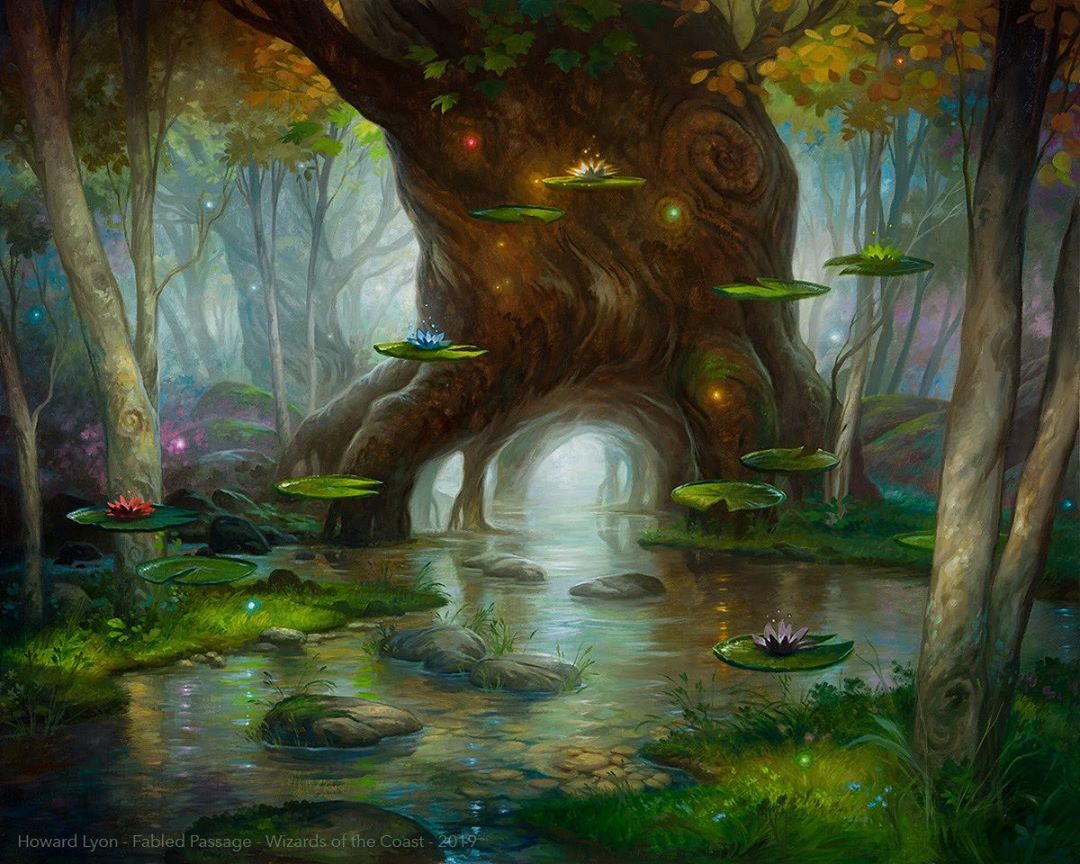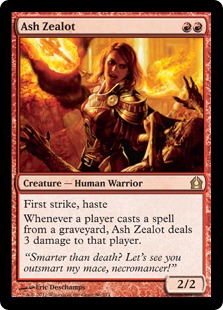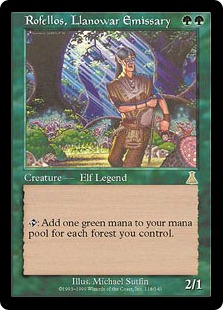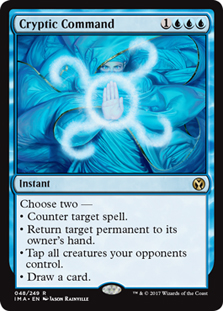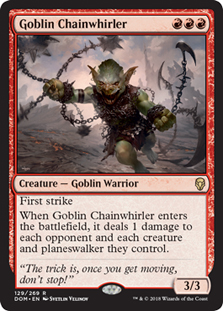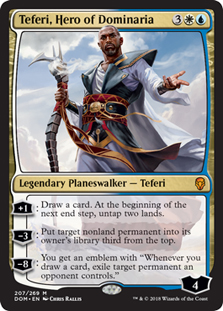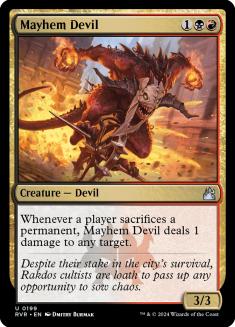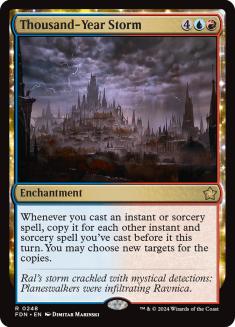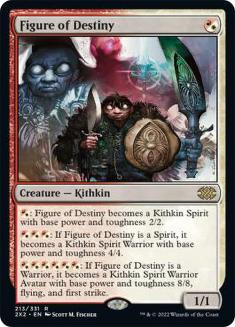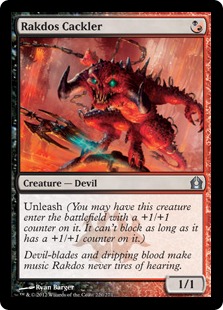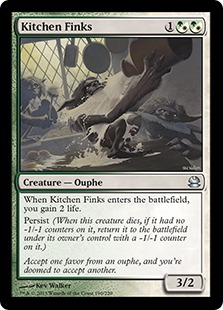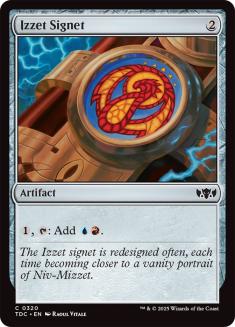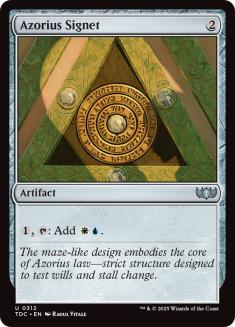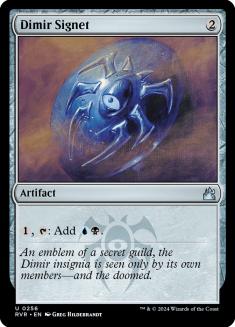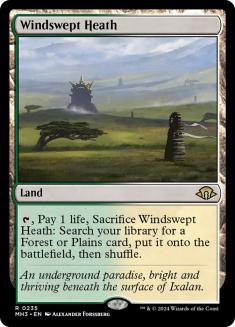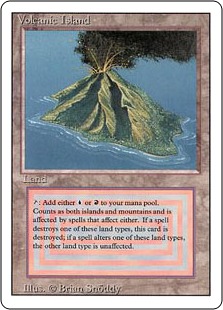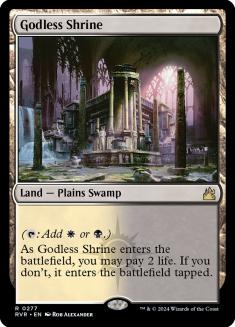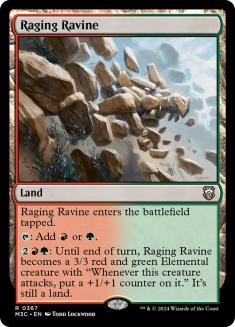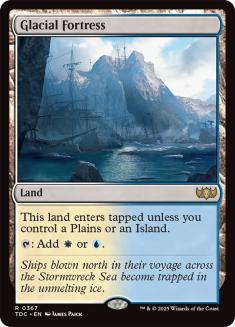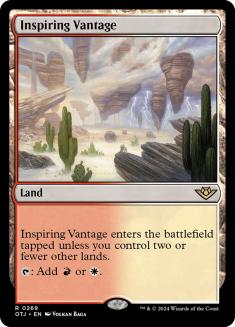Last week I offered some insights on how to get started on designing a Cube. With that groundwork laid, it’s time to dive into the details on some of the finer points of getting your Cube ready to play. Today I’m going to go over arguably the most important part of making a Cube playable: making your manabase functional.
Manabases get a lot of attention with regard to Constructed Magic and traditional Limited, but most discussion on what sorts and what volume of lands to include in Cubes tends to be around naming some ballpark number relative to different Cube sizes without regard to what an individual Cube’s needs might be. Reducing the number of non-games in Cube is paramount to the enjoyment of players, and making sure your land column is well-built is a crucial box to check to reduce non-games.
The Basics
First things first, you’ll want to establish how many colors you want players to play in your Cube’s average deck. For most Cubes the answer is going to be two to three colors. Assuming that all five colors are represented in your Cube and you want to support eight players, you can’t have too heavy of a monocolor push (that’s just math) and two-/three-color decks don’t require all that much fixing to be functional. Something like Grixis Cube works a little differently because only three colors are represented and the heavy presence of colorless cards both make drafting monocolor easier, and a Cube intended for fewer than eight players could also more realistically explore monocolor themes than a more traditional Draft environment.
Something to consider here is that, while it’s tough to provide eight players with good monocolor decks, two or three is comparatively easy. Having a small number of monocolor payoffs for when the lane is open or even heavily seeding one color with monocolor themes works just fine in an otherwise two- or three-color environment.
Promoting Color Combinations with Spells
Monocolored Considerations
Before we get into lands, I think that supporting your desired color combinations with appropriate spells is a higher priority. You want to take care to ensure that the casting costs of the spells in your Cube reward players for pursuing the archetypes and color combinations you intend to support rather than forcing players into narrow lanes. I had something of an epiphany a while back that was inspired by the card Ash Zealot.
Ash Zealot has been in my Grixis Cube for a long time without me ever giving it much thought. It’s an efficient threat that pushes back against powerful cards like Snapcaster Mage and Yawgmoth’s Will. What this surface-level analysis fails to consider is that Ash Zealot requires a lot of multicolor lands to be cast on time in a dedicated two-plus-color deck and is a pretty weak card if you’re casting it after Turn 2.
This means that Ash Zealot is more or less a card that’s only for mono-red aggressive decks, and even there the card isn’t particularly exciting. Applying this analysis more generally, I concluded that two-mana monocolored cards that cost two colored mana have arguably the most restrictive cost in Magic given that two-mana spells tend to scale poorly when drawn later in the game. Cards that are difficult to cast should provide a strong incentive to try to cast them; otherwise that difficulty in casting leads to more non-games than they’re worth.
The upshot here is that I try to only feature difficult-to-cast cards if they’re signposts for an archetype, or are just powerful cards even off-curve. I think that Rofellos, Llanowar Emissary is a good comparison to make here in that Rofellos very clearly signals that he belongs in mono-green decks and provides a huge payoff if you untap with him going into Turn 3. Cryptic Command is another example of a card that is quite difficult to cast but is well worth the trouble to either draft mono-blue or strain your mana a bit given that the card is just good at every phase of the game.
A more direct comparison to Ash Zealot as a draw to mono-red is Goblin Chainwhirler. Goblin Chainwhirler is more demanding on the manabase but provides a significantly better body and an effect that is more powerful in more situations.
If your preference is for the beatdown decks in your Cube to be monocolor, then you won’t have to sweat the difficultly of RR casting costs too much, but if Boros decks in your Cube are meant to be aggressive (and they usually are), then you’ll want to heavily bias your two drops in red and white to cost 1R or 1W. Unless you’re trying to include a particularly narrow effect or reward a very specific color combination, I generally endorse biasing towards spells that are easier to cast.
Multicolor Considerations
There are many approaches to how to handle the multicolor section of your Cube, though most Cubes have a total number of gold cards spread across all possible color combinations that is comparable to the total number of cards of one individual color. Some will have a few more gold cards, some a few less. My Grixis Cube has about half as many gold cards as it does cards from individual colors, though this has a lot to do with there being fewer total color combinations. I’ve played Cubes with no multicolor cards and Cubes with only multicolor cards, but most Cubes are going to have a handful of multicolor cards in every color pair with zero or a very small number of three-plus-color cards.
Multicolor spells are by their nature more difficult to cast than monocolored spells, and in a Cube environment that’s trying to promote two- or three-color decks I like to use my multicolor slots on either spells that have high value over replacement relative to the monocolored cards or hybrid spells. The high-value cards reward players for committing to two colors and the hybrid spells relieve some of the burden on their manabase.
Teferi, Hero of Dominaria is a great example of what I like to see in a multicolor card. He’s easy to cast and is excellent relative to other five-mana spells. Going a bit more abstractly, Mayhem Devil is an excellent multicolor card in the right environment. In Cubes with sacrifice themes Mayhem Devil communicates to players that this theme exists in the colors red and black and provides a powerful payoff for that archetype. Thousand-Year Storm in Cubes with combo archetypes will communicate such themes to players in a similar fashion.
Alternatively, hybrid spells are useful to include when your Cube supports monocolor decks of one or both of that spell’s colors. Figure of Destiny is one of my favorite Cube cards as it fits equally well in Mono-Red, Mono-White, and Boros Aggro decks when the monocolor options don’t come together. Similarly, Rakdos Cackler gets a spot in my Grixis Cube as a playable card in Mono-Red or Mono-Black Aggro. Kitchen Finks is another of my Cube favorites as it is totally serviceable in a wide range of archetypes and color combinations. Filling out your multicolor section with a spread of cards that give players some direction and some flexibility does a lot to increase Cube replayability.
Cards that are three or more colors have a much higher bar to clear for inclusion. Even if your preference is for players to play three-color decks, three-color cards aren’t necessary to do so. These cards can be quite difficult to cast and should be some of the best and/or most thematic cards in your Cube to earn their slots. I used Mayhem Devil as an example of a two-color card that I like in the right environment, and I’d say that Korvold, Fae-Cursed King is a good example of a three-color card for all the same reasons.
In my exit interview of the Magic Online (MTGO) Vintage Cube I wrote that Nicol Bolas, Dragon-God was one of the cards I would like to see cut from the Cube. It’s just too hard to cast and is extremely replaceable on power level relative to its castability. If you could take the same card and put it on a card that cost 3BB I’d be in, but as things stand it’s too difficult to cast for too little reward. You want to reward players for taking gold cards, not punish them.
An Aside on Signets
This is a topic that has gotten a good amount of attention from others at this point, though it’s worth going over here. Signets were once included very commonly in Cubes in the days when Cubes were just stacks of good cards, though today you need a very good reason to include mana fixing/acceleration that’s so easy to cast. Signets are very high picks in Vintage Cube and at this point in time are not included in the MTGO Legacy Cube due to how reductive they can be to the Cube experience.
Signets make playing a bunch of colors and expensive spells too easy and their presence in Cubes tends to make aggressive and/or monocolor decks weak by comparison. I would include them in only very high-powered environments, and preferably alongside a good spread of artifact destruction even then. Alternatively, there’s an argument for just not including aggressive cards in your Cube and making a big mana format, though I imagine a lot of games would be decided by one player having a turn two Signet and their advantage snowballing from there, so I wouldn’t necessarily endorse that either.
The Lands
At long last, it’s time to actually talk about which lands to include!
If your Cube follows the general trend on multicolored cards with about as many total multicolored cards as a given individual color and you want players to mostly draft two-color decks, then 30 nonbasic lands in a 360-card list is what I would say is the absolute minimum. Scaling that to larger Cube sizes is a simple matter of multiplication, so that would mean 45 nonbasics for a 540-card Cube. You get it.
If you want to enable three-color decks more consistently then you’ll want to up that number. Enabling three-color decks consistently typically means that you’ll have more total multicolored cards, and I would aim for 50 multicolored lands for a 360-card environment of this nature.
This is a pretty significant bump from 30, and the reason is that you want to make sure the Cube has enough lands so players can confidently cast their spells in three or more colors. If you’re successful in doing so, then more of the cards in a given draft pool will be castable, which balances out the extra slots you used on lands. I personally find drafting lands to be kind of boring and I want everybody at the table to end up with a functional deck so I like to bias heavy on the total land count, though other folks enjoy drafting lands highly, which would be a reason to keep the count lower.
As for which lands to use, the best fixing in the game and first 30 lands in most Cubes are going to be fetchlands, original dual lands, and shocklands. Fetchlands and lands with basic land types make two- or three-color manabases easy, and they also just end up being the best lands in three-plus-color environments given that they can always enter the battlefield untapped.
I won’t dance around the fact that some of these lands are prohibitively expensive, though if you’re going to eschew them there are a few things that you’ll want to consider. The way that fetchlands play with duals means that Arid Mesa provides fixing for more than just Boros decks, and it’s also good for more than just two colors of mana. If you don’t include fetchlands you’ll likely want to add at least one additional cycle of lands to my minimum suggestions to make up for missing out on this flexibility.
The other major point to consider if you’re not going to include fetchlands and duals is that you’ll need some lands that enter the battlefield untapped on Turn 1 if you want aggressive decks to be competitive. Fastlands such as Inspiring Vantage are your best bet here. Alternatively, heavily supporting monocolor decks in your aggressive colors is a clever way to curb the demand for untapped duals.
If you’re building a Cube with rarity restrictions, such as a Pauper or Peasant Cube, you won’t have the option to include multicolor lands that enter the battlefield untapped on the first turn of the game, which has some cascading effects on how you want to approach design. Bouncelands (Izzet Boilerworks and company) are really powerful cards in Limited and the lands that gain a life (Blossoming Sands et al.), while less powerful, also make it harder to play a traditional aggressive deck.
This could be addressed by using less powerful lands like Guildgates, by only supporting a small range or aggressive archetypes, or in any number of other creative ways. Just some food for thought for Pauper and Peasant fans that I thought was worth passing along, as my first Cube was a Pauper Cube that didn’t do a great job of accounting for this and featured too many embarrassing aggressive cards.
Other Cycles, and Considerations for Asymmetry
After fetchlands, duals, and shocklands, creature-lands, checklands, and fastlands are the most popular inclusions. There are plenty of playable cycles beyond these, and depending on how you want to construct your Cube there’s a lot of room for customization here. I’ve been considering Prismatic Vista a staple since it was printed and Fabled Passage is also a strong consideration for most Cubes.
Something that I recommend is exploring some asymmetry across color pairs in your land section. Fetchlands and shocklands are just great lands, but other cycles are better or worse depending on what archetypes you’re trying to support. One experiment that I’ve been very happy with in one of my Cubes is including Temples in controlling color pairs while including fastlands in aggressive color pairs. Temple of Malice is generally going to be worse than Blackcleave Cliffs and Temple of Enlightenment is often better than Seachrome Coast just by virtue of the sorts of decks these color pairs enable.
Another asymmetry that I ran for a while had to do with my loathing for Lavaclaw Reaches. It’s just the worst creature-land. For a long time I included a second Bloodstained Mire over it in my Grixis Cube, which also addressed the fact that Grixis Cube just has fewer fetches than most Cubes. Eventually my aesthetic desire to abide by the singleton rule caused me to revert this decision, but it’s a good example of a creative way to tweak balance at the cost of symmetry.
The short version is that you want to make sure the spells you include in your Cube strike a good balance of being castable and powerful and you want your lands to be the best lands for the job, which can either mean the literal best lands or the ones most appropriate for the styles of decks you’re supporting. Consistent manabases make for more consistent fun.

